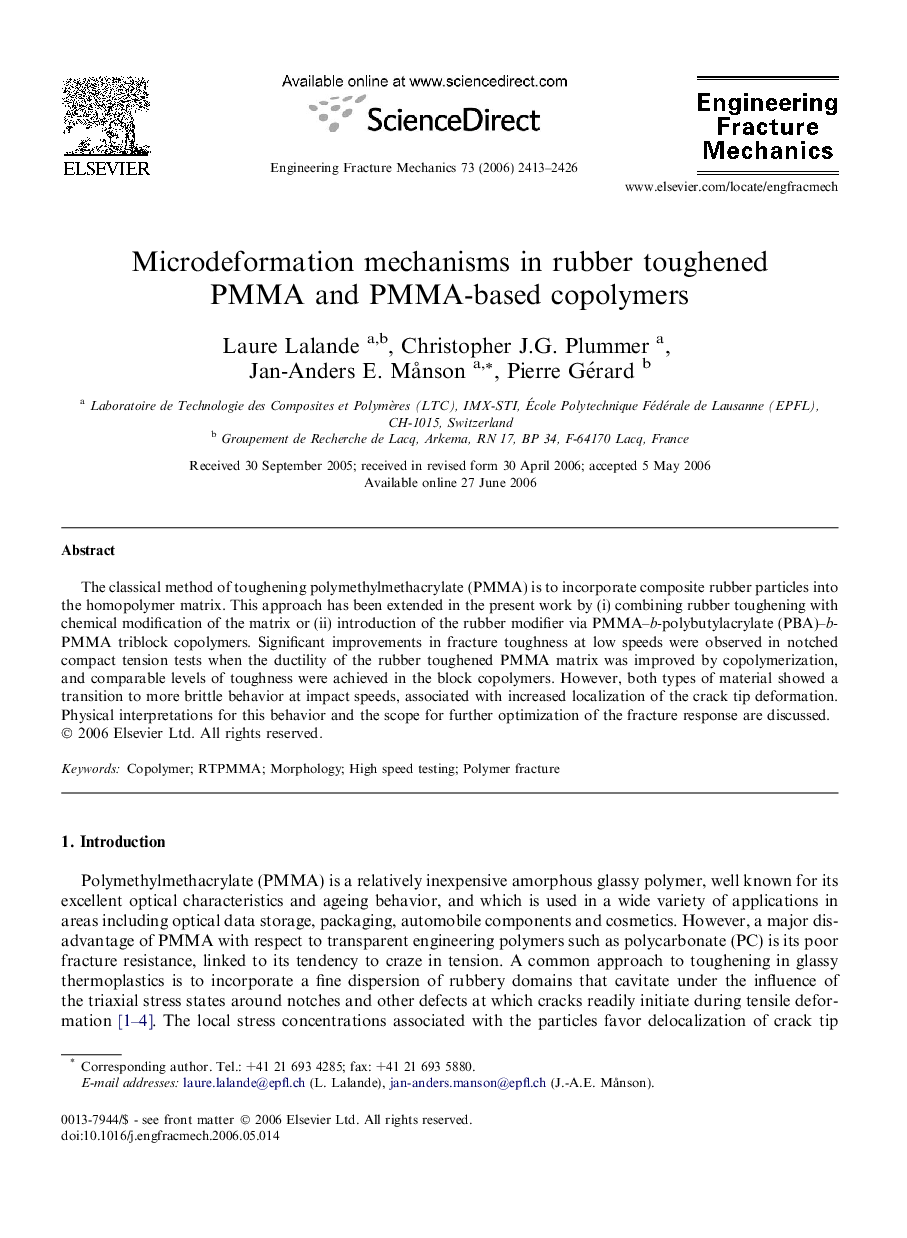| Article ID | Journal | Published Year | Pages | File Type |
|---|---|---|---|---|
| 768172 | Engineering Fracture Mechanics | 2006 | 14 Pages |
The classical method of toughening polymethylmethacrylate (PMMA) is to incorporate composite rubber particles into the homopolymer matrix. This approach has been extended in the present work by (i) combining rubber toughening with chemical modification of the matrix or (ii) introduction of the rubber modifier via PMMA–b-polybutylacrylate (PBA)–b-PMMA triblock copolymers. Significant improvements in fracture toughness at low speeds were observed in notched compact tension tests when the ductility of the rubber toughened PMMA matrix was improved by copolymerization, and comparable levels of toughness were achieved in the block copolymers. However, both types of material showed a transition to more brittle behavior at impact speeds, associated with increased localization of the crack tip deformation. Physical interpretations for this behavior and the scope for further optimization of the fracture response are discussed.
